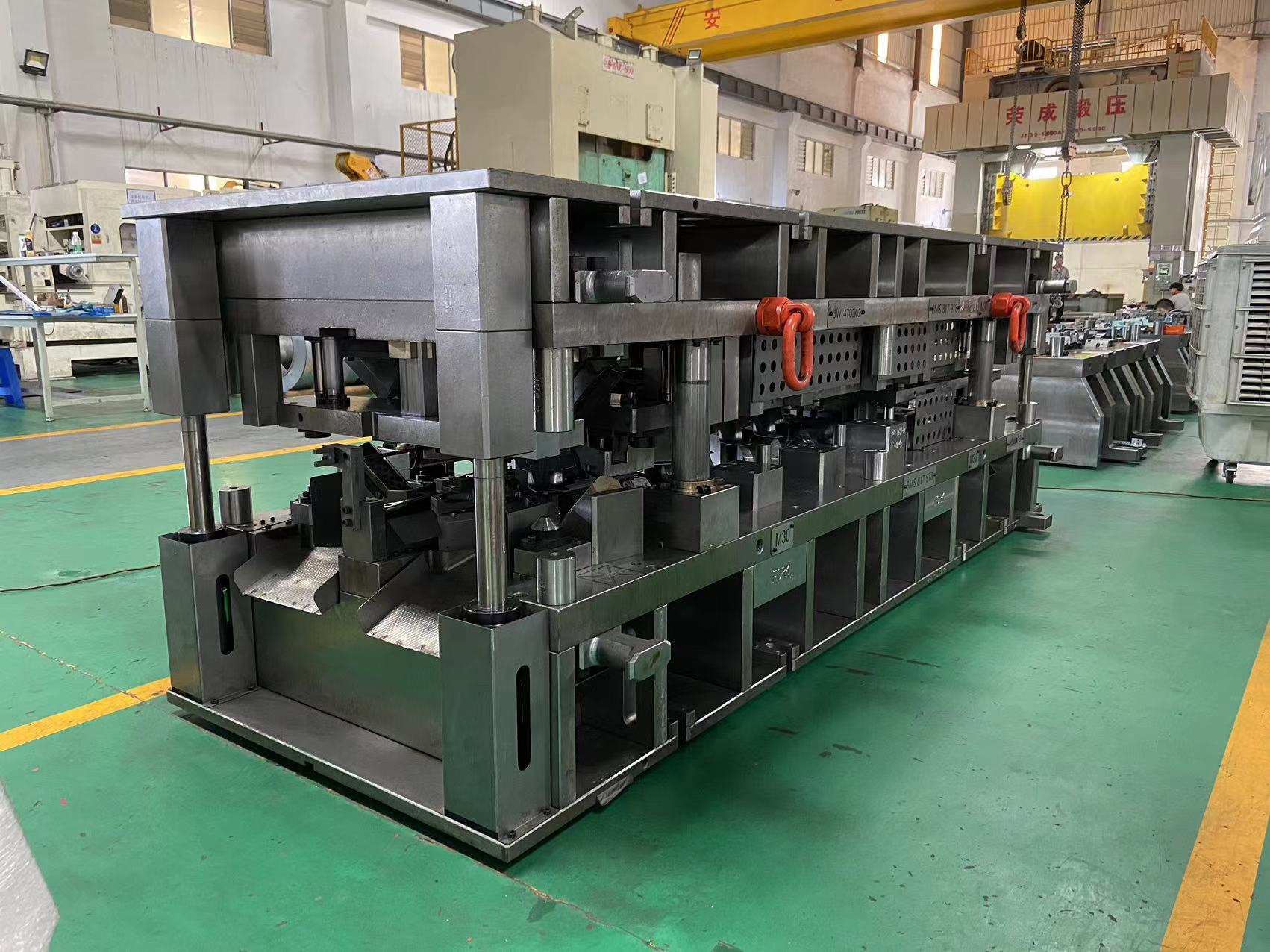Transfer die and progressive die are both types of specialized tools used in metal stamping processes to shape and form sheet metal into specific parts or components. Both dies are crucial in mass production scenarios to achieve high precision and efficiency. Let’s delve into each type:
- Transfer Die: A transfer die is a type of metal stamping die used in progressive stamping operations. It consists of several stations or operations that are performed sequentially. The main characteristic of a transfer die is that it moves the workpiece (usually a sheet metal strip) from one station to another during the stamping process. Each station performs a specific operation on the workpiece, and the transfer system transfers the workpiece between stations using mechanical arms or a conveyor.
Key features of a transfer die:
- Transfer dies are suitable for complex parts that require multiple operations and precise positioning.
- They are capable of producing intricate parts with tight tolerances.
- Transfer dies are often used in high-volume production runs due to their efficiency and automation capabilities.
- The workpiece moves between stations, and each station may perform operations like cutting, bending, punching, or coining.

- Progressive Die: A progressive die is another type of metal stamping die used for high-volume production. Unlike transfer dies, progressive dies keep the workpiece in a fixed position during the stamping process. The die consists of a series of stations that perform consecutive operations on the workpiece as it advances through the die. Each station performs a specific task, and as the workpiece progresses, new operations are carried out until the final part is complete.
Key features of a progressive die:
- Progressive dies are ideal for producing simple to moderately complex parts with repetitive shapes and uniform features.
- They are highly efficient for continuous feeding of material and require minimal operator intervention.
- Progressive dies are well-suited for long production runs with a consistent part design.
- Each station in the die is responsible for performing a specific operation, such as cutting, bending, punching, or forming, as the strip advances.

In summary, transfer dies are used for complex parts with multiple operations and involve moving the workpiece between stations, while progressive dies are ideal for producing simple to moderately complex parts with continuous feeding and consecutive operations without moving the workpiece. Both types of dies are essential in modern manufacturing to achieve high-speed production of metal components for various industries.
Post time: Jul-31-2023


.png)
.png)